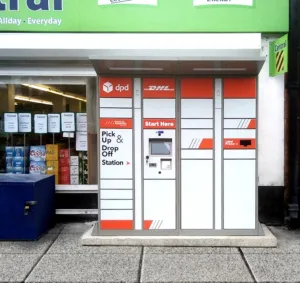By Richard Breeden, Managing Director, Econsultancy
It’s only the beginning of January but you’ve probably already picked up some items in the sales, researched your next holiday online, worked remotely, tracked your exercise routine on an app and watched a TikTok tutorial.
This is the omnichannel world and it’s making the customer journey – with their cross-platform exploration and meanderings, never mind purchasing habits – more convoluted than ever before. It means brands wanting to genuinely understand their customers need to map those journeys, identify the pain points, recognise the different purchasing mindsets and build their marketing skills to test and learn to better reach people.
Today’s connected consumer is accessing information and making purchases on any number of platforms, at different times of the day – each element feeding into the next and building on previous influences. Post-pandemic, people are no longer where they used to be, when they used to be, and this complexity means brands’ ecommerce must adapt to these new connections, customer paths and changing expectations.
Within this context, there are five changes impacting ecommerce today that were shared by a line-up of experts across the industry who all spoke at our recent Econsultancy Live event, The Connected Consumer.
Customers want to feel in control no matter what the channel
Connecting customer experiences is key to making customers feel in control – no matter what the channel. In some sectors, this is more important than others. Take financial services, where consumers are increasingly aware of their financial wellbeing and balancing things such as long-term saving with managing their immediate costs. As more financial planning and everyday actions move online, people are looking for simple processes that allow them to feel in control.
Claire Hazel, director of digital customer products, L&G pointed to its research finding that 75% of its customers expect to be able to do 10 things really simply online. To this end, reducing the ratio of the number of calls to its support team per online login was a focus to reduce friction points and encourage more customers to bank online.
The rise of creator led advertising
The prevalence of social media platforms and influencer marketing has resulted in creator led advertising going from strength to strength. And the more recent emergence of entertainment platform TikTok has boosted this further.
Simon Hofmeister, Head of industry, Ecom at TikTok, discussed this and suggests its mobile-first, sound-on platform, puts consumers in a shopping mindset. One in three users purchase directly on TikTok, challenging the traditional purchase journey and even giving rise to the hashtag #tiktokmademebuy.
Where advertising traditionally interrupts people, on TikTok it’s community led, creator led advertising, often turning solo shopping into a community activity with BookTok, FoodTok and GymTok for example.
Hofmeister points to it being 66% more likely for TikTok users to buy products from brands if they can access the community built around them, while one in two users said they would trust a brand more if it partners with creators.
Digital marketing isn’t just for online shopping
Digital marketing and the rise of ecommerce have gone hand in hand – but it’s a misconception to think that online marketing is only for online sales.
Online advertising and digital marketing do not just lead to ecommerce but to bricks and mortar commerce as well. And an often-overlooked element of digital marketing is the use of ‘near me’ when people search online for stock in local stores.
Digital marketing needs to reflect how people want to shop – for instance Tara Dee West, senior paid search manager, B&Q revealed that 80% of its customers search online first and 73% prefer shopping through multiple channels during her Using Paid Search to Drive Omnichannel Revenue presentation.
The rise of probabilistic measurement
There are two methodologies to measure the customer path across their multiple devices – deterministic and probabilistic measurement. With deterministic measurement, marketers can only count individuals who have opted in, ignoring those who have opted out. Deterministic identity measurement joins devices by using personally identifiable information (PII) such as emails, names and phone numbers. It is directly observed and is more accurate.
Probabilistic measurement creates device relationships by using linkage data and predictive algorithms. Devices are also grouped together implicitly, using device fingerprinting, Wi-Fi networks, browsing data, location and operating systems. Probabilistic uses machine learning to estimate the link between users and events (of those who haven’t opted in).
In his Digital Measurement: State of the Nation session, Andrew Hood, founder and CEO of Lynchpin, said as probabilistic measurement rises, it’s important for marketers to be aware that these are estimates of things that probably happened and knowing how accurate those algorithms are is very important. And, he said, marketers need to be aware that Google Analytics 4 is introducing probabilistic measurements.
Investment in martech skills
In the past couple of years, neurolinguistic programming (NLP) breakthroughs in AI have been transformational for martech, ranging from AI copy generation to translation. Most recently we’ve witnessed the furore around the ‘intelligence’ of ChatGPT. These can all make their mark in ad copy and blog generation for instance. Elsewhere, modelling is being used to improve relevancy and next best recommendations to online shoppers.
But it’s one thing to buy the tools and technology and another to have the competency and skills within your marketing teams to maximise their performance – so companies need to also invest in the in-house skills to accompany the initial outlay. What’s the point of great technology if no one wants to use it? As Emily Latham, head of digital and martech at Channel 4 said during the panel discussion: “Forget about people at your peril”. While Kate Cox, CMO, BrightBid added: “It’s the cost of the martech plus the cost of activation – and get good people to explain and train; you need experts who know the system.”










